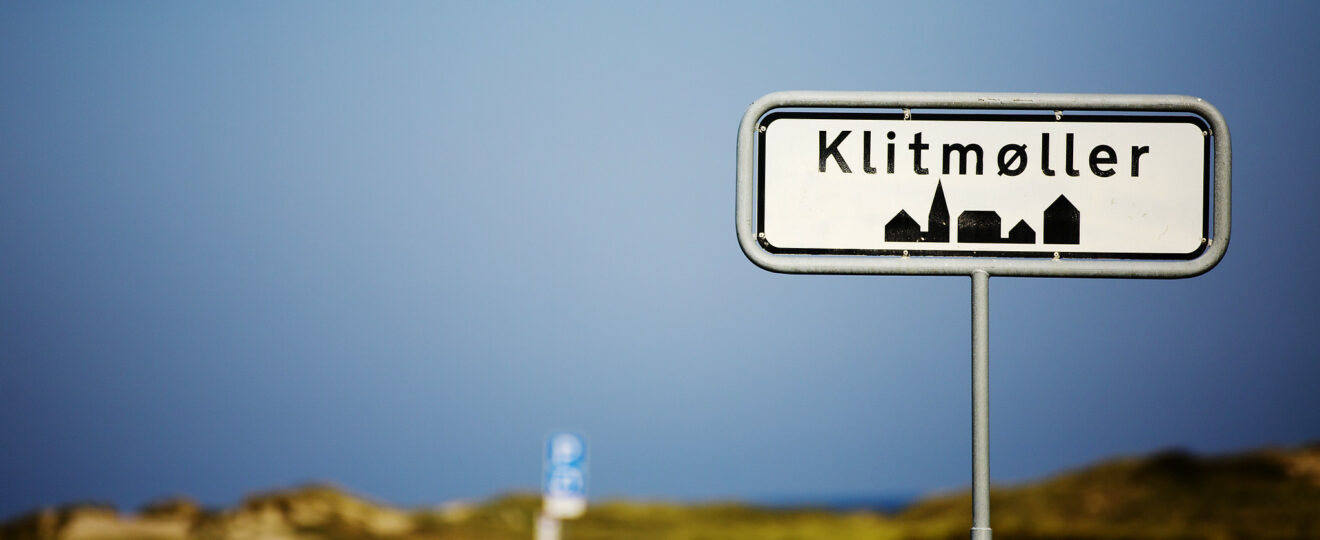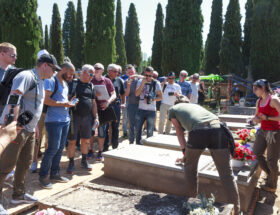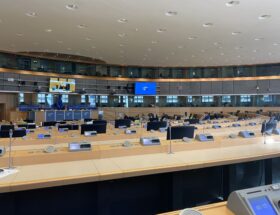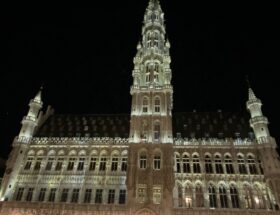welcome to Klitmøller. // CREDIT: Flickr
As more and more people move into Klitmøller, will the village be able to retain its’ personality, or will it be lost in a sea of exclusivity?
by Sam Shaw
Small villages are usually a boring place for many people to live, with not much on offer and not much reason to stay around. Small villages around the world are seeing their populations grow older and older. Extreme cases such as the town of Nanmoku Japan have seen over the past 50 years a decline of student numbers from 1,200 to merely 24, thanks to the big cities and the prospects of finding better jobs. Despite all of this, one thing always seems to remains the same in all of these small villages: a sense of community spirit.
The local feeling of a small village is one seldom found anywhere else – everybody knows everybody, people will help each other out and voices and opinions count for much more than they do in a big city.
Klitmøller is an interesting small village as it manages to retain many of its’ younger generations and attracts many working professionals to move there, despite only being small. On the face of it this would appear to be a success story, but there are two sides to the story at play. To know more about how this issue, the history of how Klitmøller came to this point must be explored.
History
The small community of Klitmøller is home to around 1,060 people as of 2021. For that reason alone, Klitmøller is probably not a place many will have heard of. Many would probably think nothing of this small little coastal town when reading the name on a map. But Klitmøller is recognized by thousands of surf fans from around the world.
So how did such a small town become a staple for surfing in Europe?
The start of this recognition is surrounded by a multitude of rumours, but the one most widely believed to be true is that a German surfer heading to Norway had to stay the night due to a stormfront coming in. It was only by chance that he stopped off in Klitmøller, and the rest is history.
Surf and windsurfing culture carried on throughout the 90s, with Klitmollers’ reputation only growing. The tourism industry the surfing brought in was providing the village a big boost to revenue with each year that went by. But it was in 2005 when surf culture really embedded itself in the community. In 2005 a “Cold Hawaii master plan” was devised by surfers, local visionaries and NASA. The goal of this was to ultimately integrate the surfing culture into the community and have the municipality recognized as the surfing capital of Northern Europe.
Since 2005, the municipality has become a cornerstone for surfing, with surf shops, equipment stores and the first school in Denmark to offer surfing as a course. This has strengthened Klitmøllers’ economy tenfold and surfing may finally have found its’ righteous home in the North of Europe.

The problem with growth
Klitmøller in the present day is a booming success story. The village has been a host to a huge increase in visitors and consequently has become one of the most sought-after property markets in Denmark. The value of property has led many of the original residents to move out of their properties, making a huge profit from a house that was once worth a lot less.
Klitmoller Rig Wear CEO, experienced surfer and long-term resident Christian Taasti gave his insight into this bittersweet reality.
“What happens in a place like this when it becomes popular is that the house prices go up, the prices were totally crazy, comparable to Kobenhavn in fact! Now there were not enough houses there [Klitmøller] so the house prices went up fast. Maybe one local built their house for half a million, and then they could have sold it for three million. So many simply sold their houses and moved somewhere else. There are so few original residents now from before surfing came here, which is a real shame for community spirit. I was known once by everyone that lived here. Now, not so much.”
A declining population of locals that remember a time before surfing echoes the reality of the Klitmøller seen today. The international scene in Klitmøller is fast becoming more commonplace than the local scene, due to the socio-economic factors the village has developed over the years. New housing sites and developments can be seen all around the village, which is driving up rent costs and housing prices as luxury apartments are built around the town and new people move in.
Linnea Fonfara has been a resident in Klitmøller for over two years and has seen some of these changes in the villages’ infrastructure happening first-hand.
“We are around 1100 to 1200 people living here right now and in the summer a lot of people come here for the surfing, which increases interest in the area for living and working. There is one big development happening that I know of which will add around 200 people to the town.”
200 new people to a town of only 1100 would mean huge growth for the town. Fonfara explored this idea from her perspective and offered two contrasting explanations over the issue.

“It is quite a lot of people yes, but I feel like I am part of the growth too as I am a recent mover. I can see why people would want to move here, its’ like leaving the rat race of the cities behind, its peaceful. The main concern is really that the village might lose its’ local allure, which would be a problem. Hopefully these developments do not move too much into our protected natural areas around Thy.”

The protected areas around the village make up the Thy national park areas, one of the only untouched and natural areas of nature left in Denmark. “The area is completely natural because it wasn’t cut down like other forests.” Fonfara told me. Developers eating into this area would mean that a section of one of Denmarks’ only non-artificial nature reserves would be damaged.

The Government standpoint
After finding out how the locals feel about Klitmøllers’ rapid expansion and developments, it was time to turn to the people giving the go ahead for it all to take place. In comes Ulla Vestergaard, the mayor of Thy and overseer of the town of Klitmøller. Vestergaard explains how the growth of Klitmøller has affected the community, but a balance is needed within it.
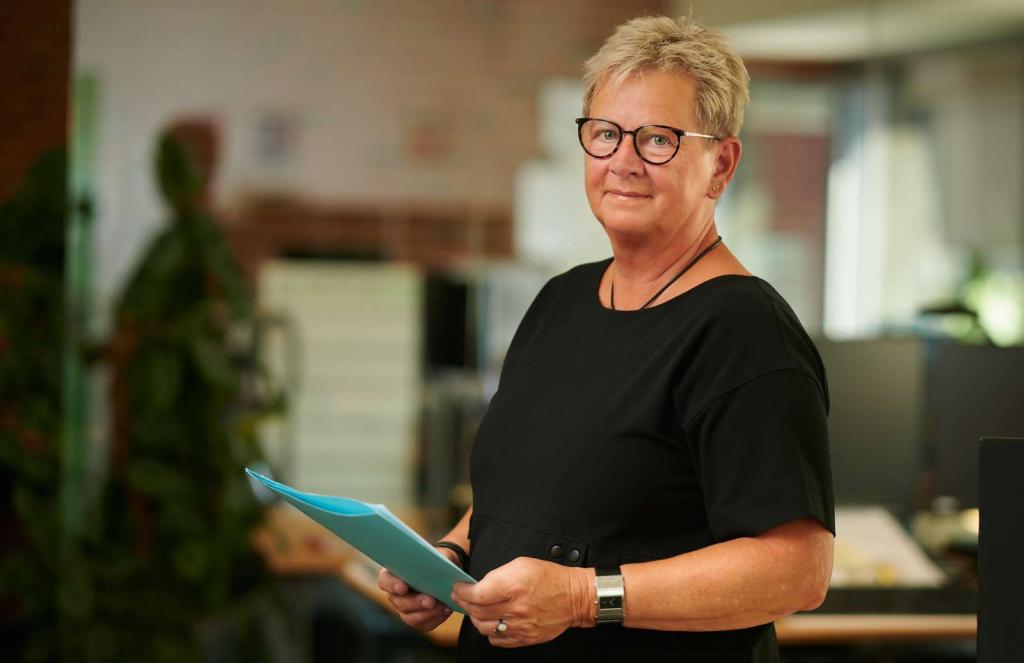
“There are some people that still wish for the old Klitmøller, and they are not as welcoming to the new people coming from, say, Copenhagen or from further away internationally. Then there are those who say “come, come!” and it is those people that are open to seeing Klitmøller grow as a community. The new people arriving have the mindset to the locals that they are here and want to help, so I think things will over time improve. A balance will be found.”
The mayor of the region is obviously welcoming of new arrivals and as they have increased over time, the cost of living has consequently risen as well. Vestergaard explains how this has again divided opinion and a balance needs to be found for this issue.”
“Because it is a high society in Klitmøller now, the prices are getting higher and higher. The prices are like they are in Thisted or other places. But over time again I think it will balance out, as people will not always continue moving out. Some people think the new developments here for the growing community are fine, and some say, “oh no they are destroying the nature.” The problems should be discussed, and we have to find a solution which can benefit both sides.”
The balance between both sides is obviously still a problem within Klitmøller. With rising house prices and new developments being built in the area, both long term, short term and local government have put across their opinions on how a new Klitmøller is impacting the community spirit. As Klitmøller continues to grow these problems may worsen the division or may oppositely see people welcoming in the new age, as Klitmøller shows no signs of stopping soon. But if one thing can be made certain here, there is no sign of a clear solution for the division as of yet.
Watch the short video here, with Ulla Vestergaard narrating how Klitmøller is changing:
